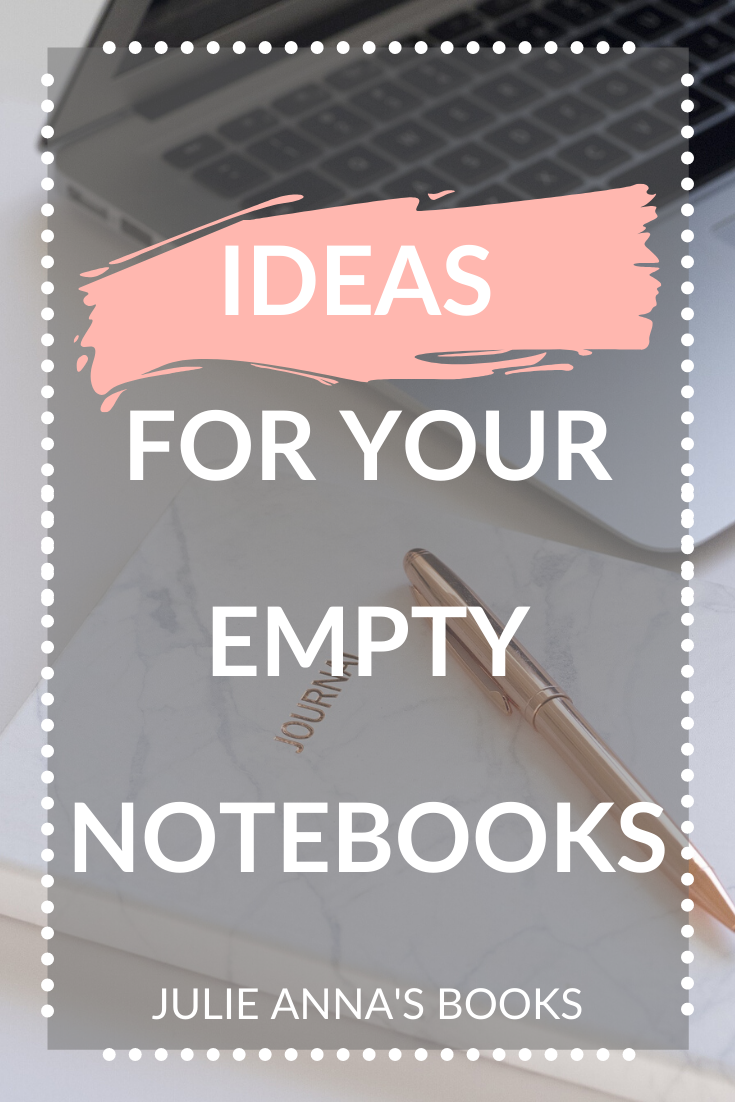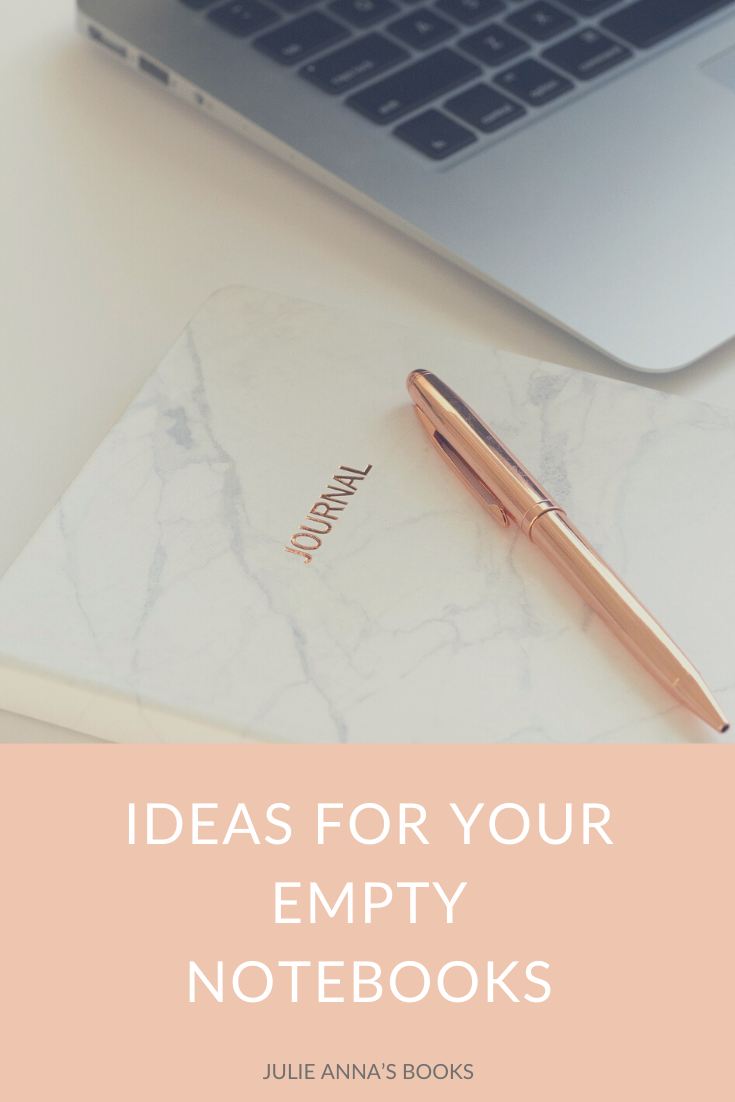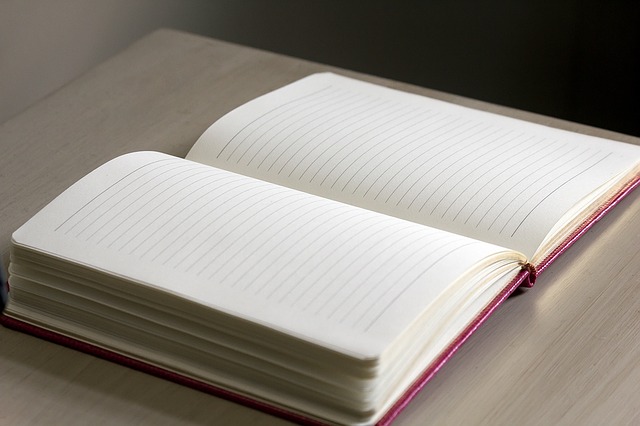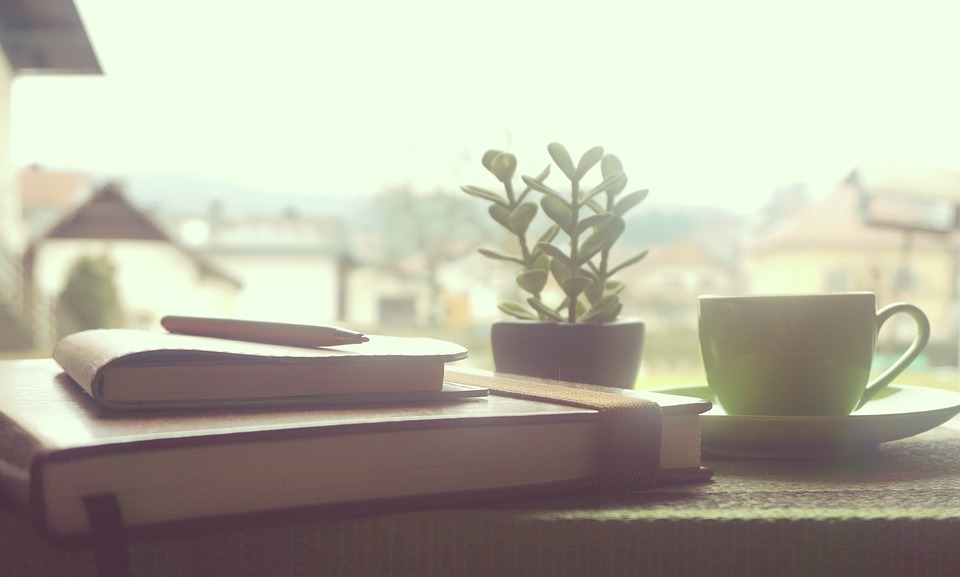It took me some time to figure out how to fill those pages, but today I’d like to share some uses for my notebooks, both practical and creative, so you can get organized, write your heart out, or do whatever you wish. Of course, if you really don’t have use for your notebooks, you could always donate them or give them to someone who would enjoy having it more than you. You could also take these ideas digitally, if that’s what you prefer, and keep everything together in that way. Either way, I hope these ideas are helpful to you and that they help you to finally write on that first page!
1. Scratchpad
Sometimes when you’re on the phone, at work, or in any kind of multitasking situation, you need a place to save important information for use later. Sure, you could always jot these things down on the back of an envelope or a scrap piece of paper, but if you have your scratchpad with you, you may as well put it there. I can’t tell you how many times I needed to look for a loose note somewhere that I didn’t think I’d need anymore. Keeping all of those contents together can be helpful, and if you do have to jot something down on something separate, you can always tape it in later.
2. Online Course Notes
One of the perks of graduating from my college is that I always have access to Lynda.com for online courses (check your local library if you have sites like these too!). There are also many free resources out there that I like to take advantage of to brush up on my current skills or learn new ones. Having a dedicated notebook for these resources is great because I always have a quick reference to what I learned when I need it.
3. A Collection Of Ideas to Return To
Have you ever been working on something when you thought of something else that you wanted to do or an idea that you had? Then you stop what you’re working on because you’re afraid that you’ll forget the thought you had. Instead of walking away from your current work, have a notebook where you can write those thoughts down in detail, and when you have a minute, return to it.
4. Financial Planner / Tracker
Between direct deposits, registers, credit card statements, bills, loans, automatic transfers, and more … our money is going to a lot of different places. Have one dedicated place to keep track of everything.
5. Food / Exercise / Water Tracker
Track your diet progress, how far you run, how much you lift and how many reps, macros, water, anything. You can set up your book to have charts or tables if you’d like, and bring it to the gym with you to record your section inbetween sets or after class. Some people record their sessions on paper, but having a dedicated notebook also gives you the benefit of having an easy surface to write on!
6. Content Ideas
Do you need a running list of ideas for your blog? How about video ideas for YouTube? Content for your socials? Ideas for future meetups? Activities for your organization? You can keep all of your ideas together in one notebook. I tried keeping a running list of ideas for this blog in my bullet journal, but I’m going through so many pages it just makes sense for me to have a separate notebook for it.
7. Quotes
Have you ever heard someone say something particularly inspiring that you wanted to have written down? Or maybe you read a striking part of a book or article that you want to have recorded (I especially find this to be the case with self-help books). Keep a space for these – you can also reflect on them and write why you feel they resonated with you.
8. Planner / To-do List
I have a notebook for work currently that functions as an everyday to-do list, sorted by date. I love having this because I can not only set a list up for however far into the future I want, but I can also look back several pages if I need to be reminded of when I completed a certain task.
9. Sketchbook
If you’re interested in practicing with drawing, even if it’s not a blank or dotted notebook, any book will do to help you practice. If you eventually want to work with heavier materials like paint, it would be best to switch to paper more suited for that, but getting some doodles or concepts down on paper will do just fine.
10. Handwriting / Handlettering Practice
A dedicated space to practice the way you write. You could also combine this with number 7.
11. Poetry or Songwriting
You may not be a poet or musician, but writing poetry or songs is a creative and great way to put your thoughts and feelings on paper. You could even reserve the space to write stories of your own and practice creative writing.
J O U R N A L S
Earlier in this post I mentioned that when I had so many empty books, I wanted to journal in them, but I didn’t know what to write about. If you’re like me, this list is for you. Feel free to incorporate any of the above plus your own ideas into your journal – after all, it is yours!
12. Follow Some Prompts
There are some really interesting journal prompts out there to get your mind flowing. If you’d like them to be personal, check out some self-discovery prompts. I’m currently using this list from Page Flutter, and so far I’ve been learning a lot about the way I perceive myself and the world around me, even if I’ve only done a couple prompts so far!
13. Freewriting
Every day (or whenever you sit down to write), set a timer for however long you want and just write. Whatever you think of, whether it’s something that’s been on your mind or a story. Just let your mind go and do its thing.
14. A Book of Lists
If you enjoy making lists, why not save some for your journal, too? You can have entries for favorites, interesting facts, wish lists, bucket lists, anything you want.
Related: 41 List Ideas for Your Journal
15. Gratitude Journal
Gratitude journals (or expressing gratitude regularly in general) is a great way to boost your spirits and embrace positive thinking. Every day, write something that you were grateful for. Of course, it doesn’t have to be anything extravagant, because it’s all about having an appreciation for the little things in life.
16. Book Reviews and Reflections
Every time you finish a book, chapter, or read a striking part, take the time to write down and reflect on it. How did you think the book was overall? Were there parts left up to interpretation, and if so, how did you interpret it? If there were any parts of the book that were striking to you, why/what happened? The joy of reading (or at least to me, anyway) is getting the opportunity to live in a new world and respond or question the environment. I believe we gain a lot from this, and reflecting on our readings can help us learn a lot, not only about the subject matter but also ourselves!
17. Art Journal
This is on my list of things to try. Art journals are like contained versions or art, sometimes featuring words, quotes, or journal entries, and all of the pages I have seen are absolutely beautiful. If you have lots of art supplies that you’d like to use (or even if you don’t have as many), try art journaling out!
18. Bullet Journal
Bullet journals are great because you can do whatever you want with them. You can include all of the above in your bullet journal if you wanted to. Many people like to use dotted journals for these, but lined journals work just fine, especially if you want to keep things minimal, or if you want to try the concept out. I wrote a post on why I started bullet journaling that you can read here, and I actually pulled the book I’m currently using for it from my empty books! If you’re not sure what I’m talking about or don’t know how to set up a bullet journal, be sure to check out the bullet journal website here.
I hope this gave you some ideas on how to work with your notebooks. What have you been writing about lately? Let me know in the comments.
Sincerely,
Julie Anna







